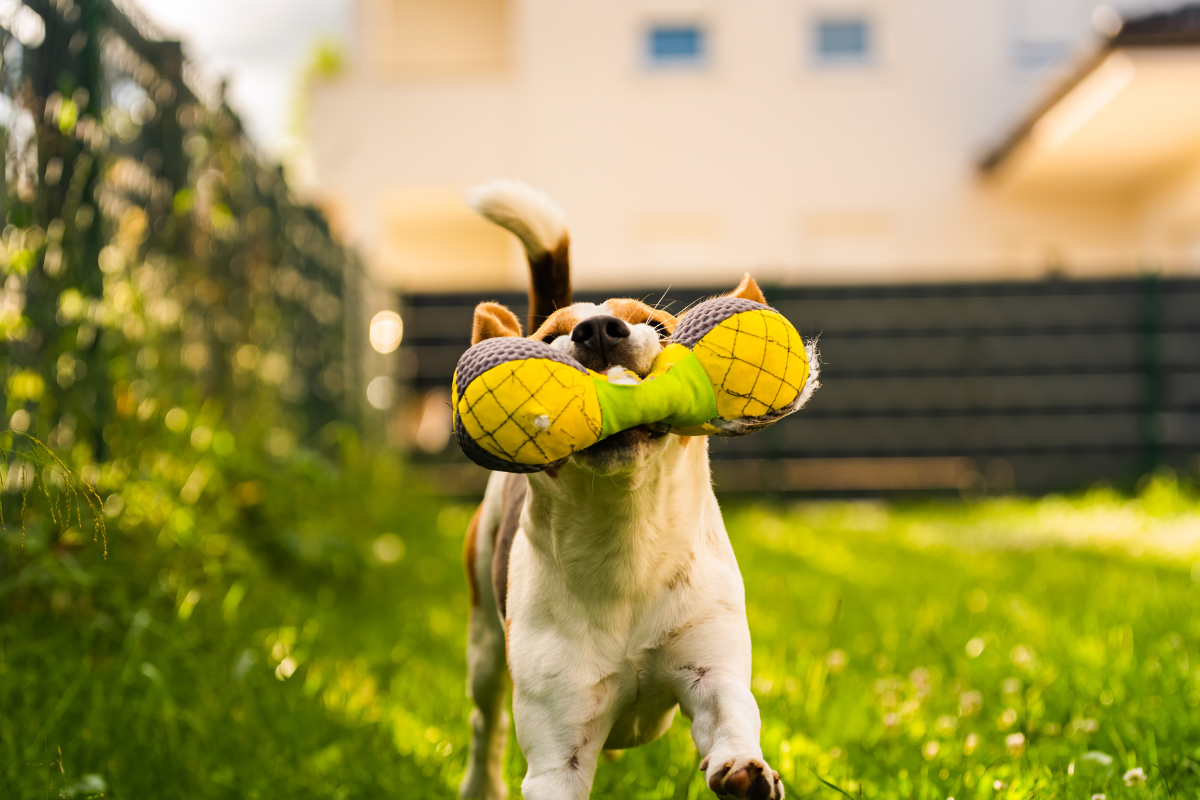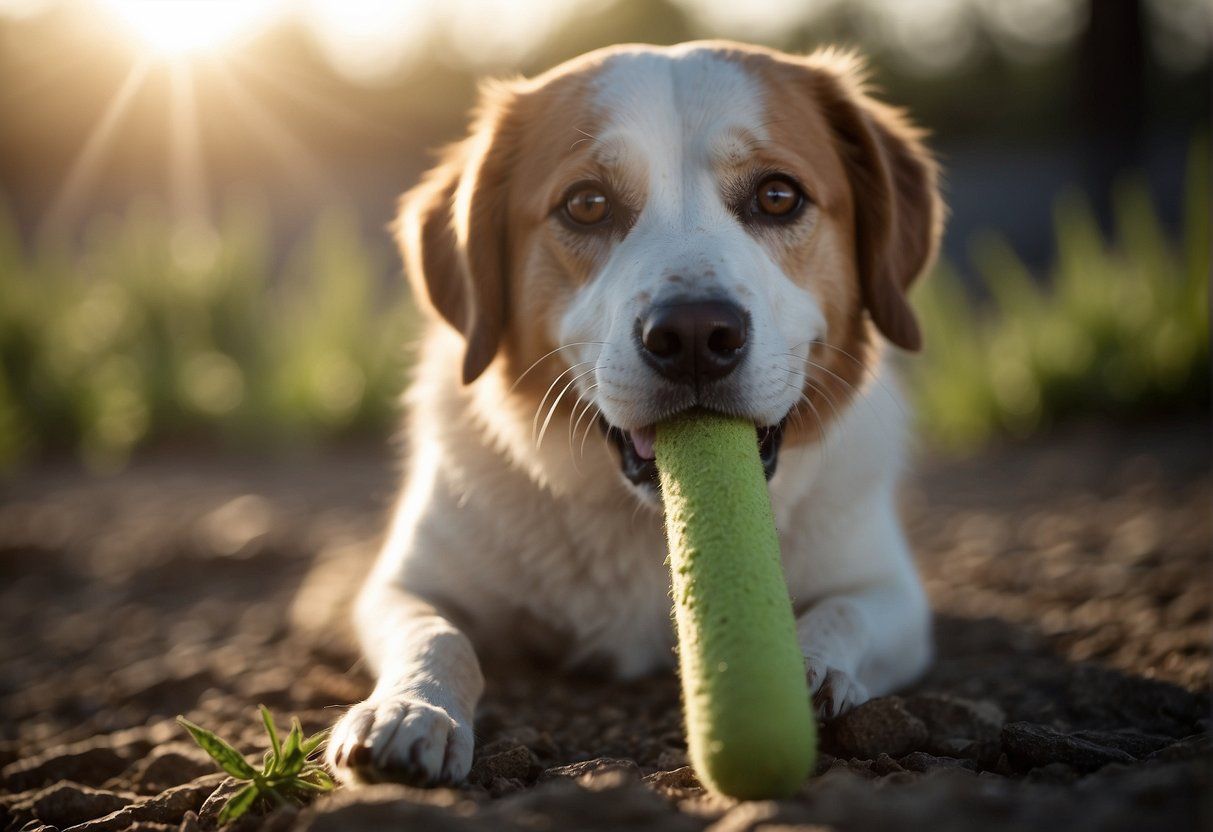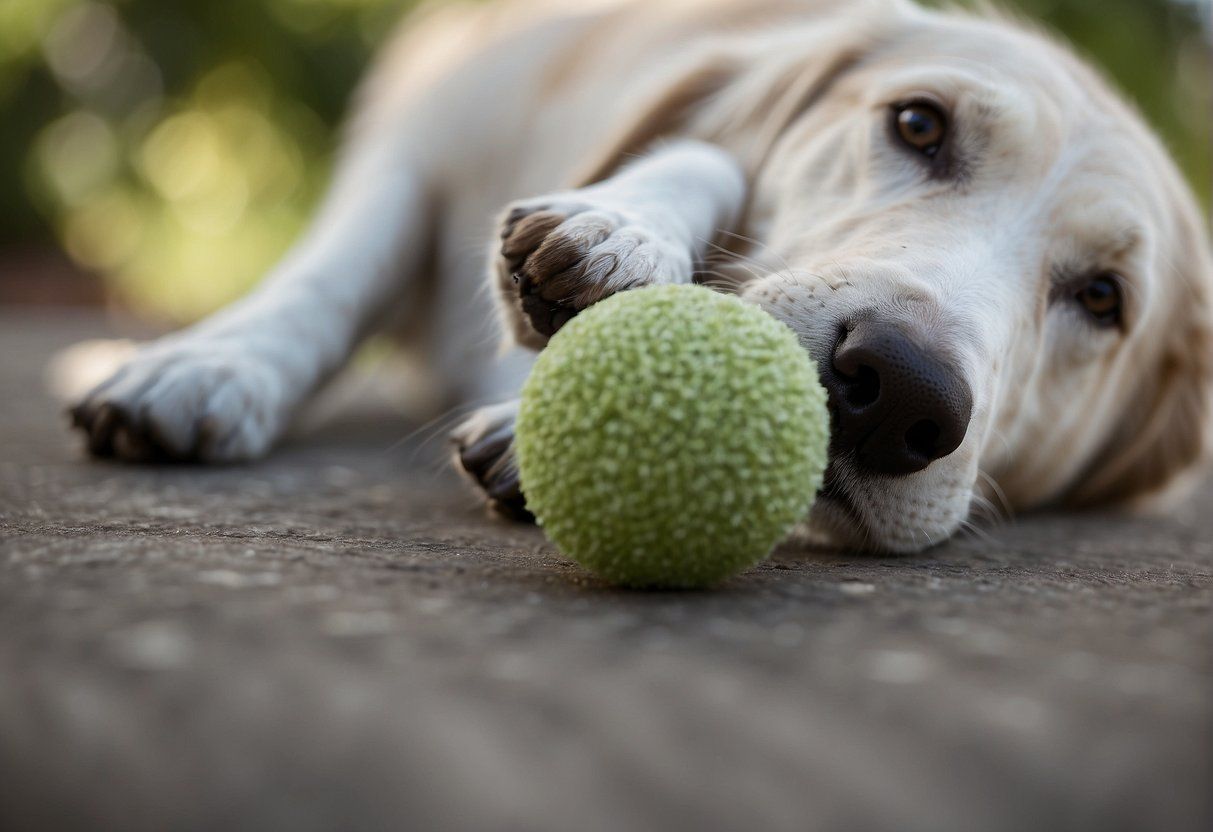Can Dogs Play With Catnip Toys Safely?
Can Dogs Play With Catnip Toys Safely?

Vet Reviewed

By: Sarah Hodgson
February 15, 2024
Table of Contents
Both dogs and cats are known for their unique personalities and behaviors. While some dogs and cats get along famously, others may not see eye to eye. One thing that both dogs and cats seem to enjoy is playing with toys. But can dogs play with catnip toys?
Quick Answer:
Although it's okay to let your dog play with catnip it's recommended to avoid them as there are serious safety hazards associated with letting your dogs play with them.
Let's dive in!
What Is Catnip?
Catnip is a plant that is a member of the mint family. It contains a chemical called nepetalactone, which is known to have a euphoric effect on cats. When cats smell or consume catnip, they may exhibit a range of behaviors, including rolling, rubbing, and licking the plant, as well as vocalizing and becoming more active.
The effects of catnip on cats can vary depending on the individual cat and the amount of catnip consumed. Some cats may become more playful and energetic, while others may become more relaxed and sedate. In some cases, cats may even exhibit aggressive or erratic behavior after consuming catnip.
Can Catnip Affect Dogs?
While catnip is primarily known for its effects on cats, some dogs may also be attracted to catnip toys. However, the effects of catnip on dogs are not as well understood as the effects on cats. Some dogs may show no interest in catnip, while others may become more playful or even exhibit mild sedative effects.
It's important to note that while catnip is generally considered safe for cats and dogs, consuming large amounts of catnip can cause digestive upset or other adverse effects. Additionally, some cats and dogs may be allergic to catnip, so it's important to monitor your pet's behavior after introducing them to catnip toys.
While catnip may not have the same effects on dogs as it does on cats, some dogs may still enjoy playing with catnip toys. As with any new toy or treat, it's important to monitor your pet's behavior and ensure they are not consuming excessive amounts of catnip.

Can Dogs Play With Catnip Toys?
When it comes to dogs and catnip toys, safety should be the top priority. While catnip is generally safe for dogs to be around, there are some important things to keep in mind to ensure that your furry friend stays when playing with catnip toys.
So while catnip is safe for dogs we recommend avoiding playing with catnip toys. Some catnip toys may be too small or easily breakable, which can pose a choking hazard for dogs. Therefore, it is important to choose toys that are appropriate for your dog's size and play style.
The problem with catnip toys is that they aren't designed for designed for dogs. Catnip toys are specifically designed to appeal to cats and stimulate their natural instincts. Dogs, on the other hand, do not have the same response to catnip. They lack the specific receptors in their olfactory system that are responsible for the reaction to catnip.
They might go ahead and eat the toy due to its small size and their instincts of thinking it's food. So while you can technically get catnip toys that are big and aren't a risk for dogs. We recommend avoiding it and just getting classic dog toys which you're dog will enjoy more.
How To Choose Catnip Toys For Dogs
If you decide to go ahead and get catnip toys for dogs just make sure that the toys you're selecting are specifically designed for dogs, rather than for cats. Dog-specific toys are typically larger and sturdier, which can help reduce the risk of choking or other injuries.
It is also important to choose toys that are made from safe and durable materials, such as rubber or nylon. Avoid toys that are made from cheap or flimsy materials, as these can easily break apart and pose a choking hazard.
Guidelines for Introducing Catnip Toys to Dogs
Introducing a new toy to a dog can be exciting, but it's important to do it properly.
When introducing the catnip toy to your dog, start by allowing them to sniff and investigate it. Observe their behavior closely. If your dog shows excessive interest or becomes agitated, it may be best to remove the toy and try a different type of toy instead. Remember, not all dogs will react the same way to catnip toys, and it is important to respect your dog's preferences and comfort levels.
Supervision and Toy Interaction
It is important to supervise your dog when they are playing with catnip toys. While catnip can be a fun and stimulating experience for dogs, it is important to make sure that they do not ingest too much of it or become overly excited.
Additionally, if your dog is a heavy chewer or tends to destroy toys quickly, it may be best to limit their access to catnip toys or to only allow them to play with them under close supervision.
By following these safety considerations, you can help ensure that your dog has a fun and safe experience with catnip toys.
Safety Precautions When Allowing Dogs to Play With Catnip Toys
If you decide to allow your dog to play with catnip toys, there are a few safety precautions to keep in mind:
- Always supervise your dog when they are playing with any toy, including catnip toys. This will help prevent choking hazards or ingestion of small parts.
- Regularly inspect the toy for any signs of damage or wear and tear. Replace the toy if it becomes damaged to prevent any potential harm to your dog.
- Avoid leaving catnip toys out for extended periods of time. This will help prevent your dog from becoming overly fixated on the toy and potentially developing destructive behaviors.
- Store catnip toys in a secure location when not in use. This will prevent your dog from accessing the toy without supervision.
By following these safety precautions, you can ensure that your dog's playtime remains enjoyable and safe.

When to Avoid Catnip Toys
While catnip is generally safe for dogs, there are some instances when it's best to avoid catnip toys altogether.
If your dog has a history of aggression towards cats, it's best to avoid catnip toys as they may trigger aggressive behavior. Additionally, if your dog has a history of digestive issues, it's best to avoid catnip toys as they may cause stomach upset.
Alternative Toys for Dogs
When it comes to playing with toys, dogs can be just as enthusiastic as cats. However, not all toys are appropriate for both species. While catnip toys might be a hit with felines, dogs generally have no interest in them. Here are some other alternatives to catnip toys for dogs:
Dog-Specific Toys
There are many dog-specific toys that are designed to appeal to their natural instincts.
- Plush toys with squeakers: These toys are soft and cuddly, and many come with built-in squeakers that dogs love. They can provide hours of entertainment and playtime.
- Rope toys: Rope toys are great for interactive play and can help keep your dog's teeth clean and healthy. They are durable and can withstand rough play.
- Interactive puzzle toys: Puzzle toys are designed to challenge dogs mentally and keep them engaged. They often require dogs to figure out how to access treats or solve a problem.
- Rubber chew toys: These toys are durable and perfect for dogs that love to chew. They can help satisfy your dog's natural chewing instincts and provide mental stimulation.
Interactive Play and Dog Toys
Interactive toys are a great way to bond with your dog and provide them with mental stimulation. Frisbees, balls, and tug toys are all popular options for interactive play. For dogs who love to fetch, there are also automatic ball launchers that can keep them entertained for hours.
Toy Safety Standards for Dogs
When choosing toys for your dog, it's important to consider their safety. Look for toys that are made from durable materials and are free from any small parts that could be swallowed. It's also important to supervise your dog while they are playing with toys, especially if they are prone to chewing.
The Bottom Line
So there you have it. While we recommend avoiding catnip toys for your dog you can get them just make sure to keep an eye on your dog at all times while they're playing with it.
Remember that interactive play between you and your dog is an important part of their overall well-being. Playtime with appropriate toys can help strengthen the bond between you and provide your dog with mental and physical stimulation.
Frequently Asked Questions
Are there any risks associated with dogs playing with catnip toys?
While catnip itself is not harmful to dogs, there could be potential risks associated with the toys themselves. Some catnip toys may contain small parts that could pose a choking hazard to dogs, especially if they are aggressive chewers. It's essential to supervise your dog while they play with any toy, including catnip toys, to prevent accidental ingestion of foreign objects.
Can playing with catnip toys cause behavioral changes in dogs?
Since most dogs do not react to catnip in the same way as cats do, playing with catnip toys is unlikely to cause significant behavioral changes in dogs. However, some dogs may become overly excited or possessive of the toy, leading to potential behavioral issues such as resource guarding. It's essential to monitor your dog's behavior and intervene if necessary to prevent any negative outcomes.
Should I be concerned if my dog ingests catnip?
While catnip itself is not toxic to dogs, ingesting large quantities of catnip may cause gastrointestinal upset, such as vomiting or diarrhea. If your dog ingests a small amount of catnip from a toy, it's unlikely to cause any significant issues. However, if you're concerned or if your dog shows any signs of discomfort after ingesting catnip, contact your veterinarian for guidance.
What should I do if my dog shows signs of discomfort after playing with a catnip toy?
If your dog shows any signs of discomfort, such as vomiting, diarrhea, or unusual behavior, after playing with a catnip toy, it's essential to remove the toy immediately and monitor your dog closely. If symptoms persist or worsen, contact your veterinarian for further evaluation and guidance.

Subscribe to Petfluence!
Get updates on the latest posts and more from Petfluence straight to your inbox.